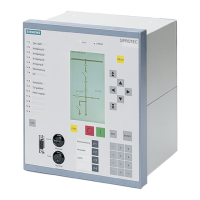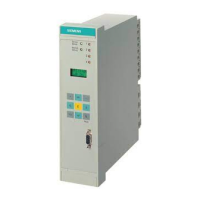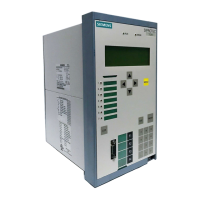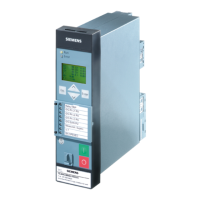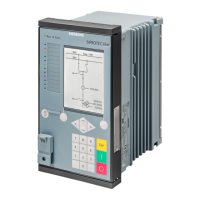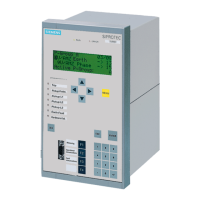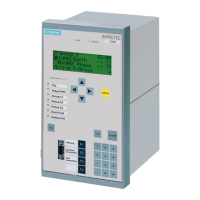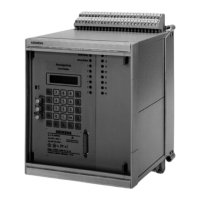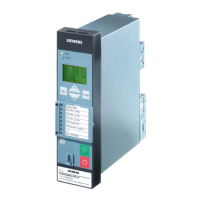Functions
6-1317SJ62 Manual
C53000-G1140-C121-1
sequence elements, the program is started. Like the ground fault reclosing pro-
gram, this program can be started via a binary input as well.
Determination of which program will be executed is based solely on which elements
pick up prior to the first reclosing attempt. Once a program is started, it will be used to
control reclosing until the last allowable reclosing signal is initiated.
For each of the programs, up to 9 reclosing attempts can be separately programmed.
The open breaker times preceding the first four reclosing attempts can be indepen-
dently set, however, the open breaker times preceding the fifth through the ninth re-
closing attempts will correspond to the open breaker time that precedes the fourth re-
closing attempt.
Selectivity Before
Reclosing
For the automatic reclosure sequence to be successful, faults on any part of the line
must be cleared from the feeding line end(s) within the same – shortest possible –
time. Usually, therefore, an instantaneous protection element is set to operate before
an automatic reclosure. In addition, when two or more reclosing attempts are antici-
pated, high speed tripping should be allowed. To begin with, high speed tripping min-
imizes the impact fault current might have on the system. Second, high speed tripping
prevents the operation of load side fuses for temporary faults. Prior to the final reclos-
ing attempt, however, high speed tripping should be defeated to prevent a feeder lock-
out from occurring due to faults beyond load side protective devices.
Single-Shot
Reclosing
When a trip signal is programmed to initiate the automatic reclosing system, the ap-
propriate automatic reclosing program will be executed. Once the circuit breaker has
opened, the programmable dead time interval is started. Once the dead time interval
has elapsed, a closing signal is issued to reclose the circuit breaker. A blocking time
interval is started at the same time.
The dead time can be set individually for each of the two reclosing programs.
If the fault is cleared (successful reclosing attempt), the blocking time expires and au-
tomatic reclosing is reset in anticipation of a future fault.
If the fault is not cleared (unsuccessful reclosing attempt), then a final tripping signal
is initiated by one or more protective elements. In addition, if a new fault occurs before
the blocking time elapses, no reclosing will be initiated. After the unsuccessful reclos-
ing attempt, the automatic reclosing system is dynamically blocked (see below).
Multi-Shot
Reclosing
The 7SJ62 relay can be programmed to initiate up to nine (9) reclosing attempts. The
number of reclosing attempts can be set differently for the phase fault reclosing pro-
gram and the ground fault reclosing program. The first dead time interval precedes, in
principle, the first reclosing attempt. If the first reclosing attempt is unsuccessful, the
blocking time interval is reset and the second dead time interval begins. At the end of
the second open breaker interval, a second reclosing attempt is initiated. This cycle
can be repeated until the allowable number of reclosing attempts programmed have
been made.
The dead time intervals preceding the first four (4) reclosing attempts can be set dif-
ferently for each of the two reclosing programs. The dead time intervals preceding the
fifth (5) through the ninth (9) reclosing attempts will be equal to the dead time interval
that precedes the fourth (4) reclosing attempt.
If one of the reclosing attempts is successful, the blocking time expires and the auto-
matic reclosing system is reset.
If none of the reclosing attempts is successful, then a final circuit breaker trip will take
place after the last allowable reclosing attempt has been made.
www . ElectricalPartManuals . com
